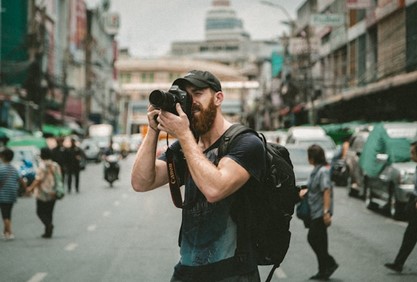David VanderSchee is a hobby photographer who enjoys snapping shots of wildlife in their unedited, natural form. In the following article, David VanderSchee takes readers through developing skills in photography, ensuring every hobbyist or amateur can take professional grade photos of their favorite things.
Every great professional photographer was once an amateur.
As a child, acclaimed food photojournalist Derek Pfohl honed his craft while hanging out in his parent's restaurant, snapping photos of the intricate plates leaving the kitchen. Anne Geddes, known for her fantastic baby photography, was self-taught - she created a portfolio of family photos before opening her first studio.
Legend Ansel Adams received his first camera at 14 on a family trip to Yosemite National Park.
The art of photography is never mastered overnight. It takes experience and patience, passion, and creativity. Developing the essential skills is challenging, but above all, it's exciting!
David VanderSchee explains that if an interest in photography goes beyond the standard selfie or vacation pictures, spend some time looking through a personal camera roll. Are there certain subjects that are commonly shot? Is it nature? Landscapes? Portraits of friends?
Basic photography skill then moves to knowing one's camera well. For those interested in moving past the smartphone and into a professional type of camera should know the ins and outs of the lenses, shutter speeds, and how the aperture works. Not all zoom lens cameras are the same do extensive research and be sure to choose the best camera for the job.
Snapping wildlife photos will require a larger zoom lens with a faster shutter speed and wide aperture, compared to what's needed for say, still photos, or more controllable objects, such as people or still landscapes. Budding photographers should spend time trying out different focuses and exposures to get the shot they want.
David VanderSchee provides one final assignment: When first learning to take photos, one should spend time shooting what they love, whether that's photographing a pet or the flowers in the yard.
David VanderSchee provides more essential tips below:
 Explore Others' Work
Explore Others' WorkDavid VanderSchee notes that photography blogs don't just post photos but usually offer tips on how to use a camera well in different settings among other important information. Such blogs can function as free, regularly updated textbooks for budding photographers and a way to keep up with the best new photography trends.
Many community centers host photography workshops that can be invaluable sources of advice and inspiration and great ways to put new skills and styles to practice. Such workshops are a fantastic way to connect with other photographers and learn about job opportunities or internships.
Think of new ways to get images of popular subjects and scenery. It's one of the biggest ways to grow technically and creatively.
Those looking to develop photography skills should practice taking photos in different lighting environments, analyzing them, and tweaking techniques as needed through a camera's settings.
It's important to develop an awareness of these mergers and move their focus (or themselves) in different angles to effectively avoid them. (It's much easier to avoid an unwanted merger than edit it from the picture once it's there plus, it's less time consuming to take that extra step or angle in the first place).
Photography is a difficult industry to break into, but getting the most experience possible and earning a solid reputation comes much quicker when one commits to putting their name out there even for little or no pay at first.